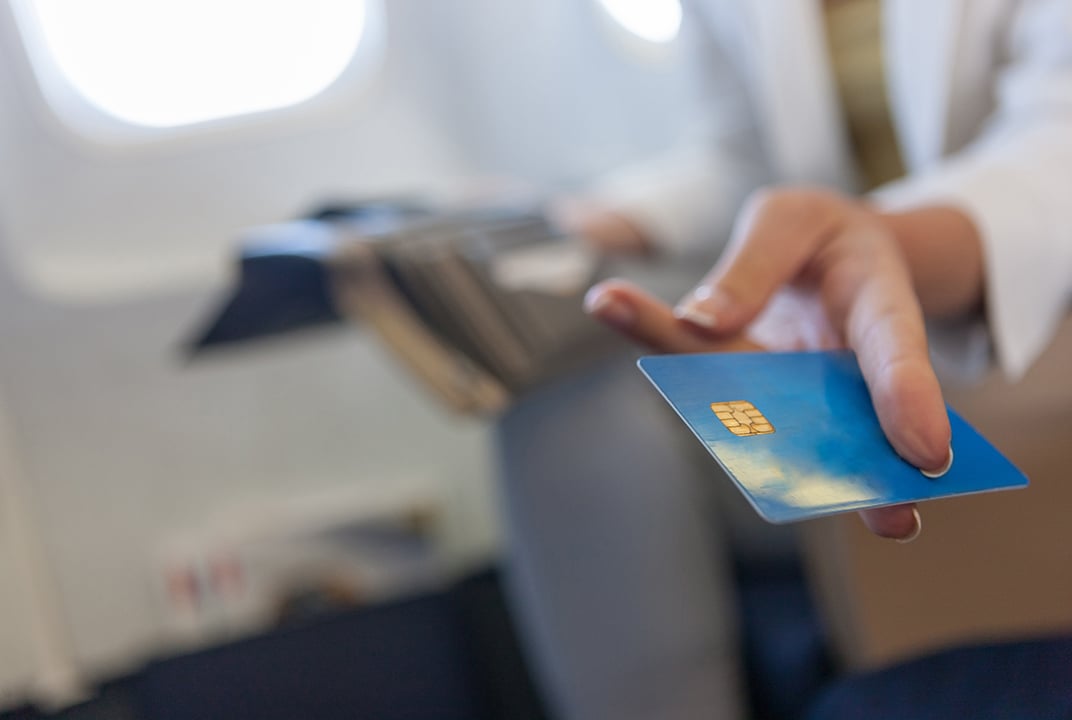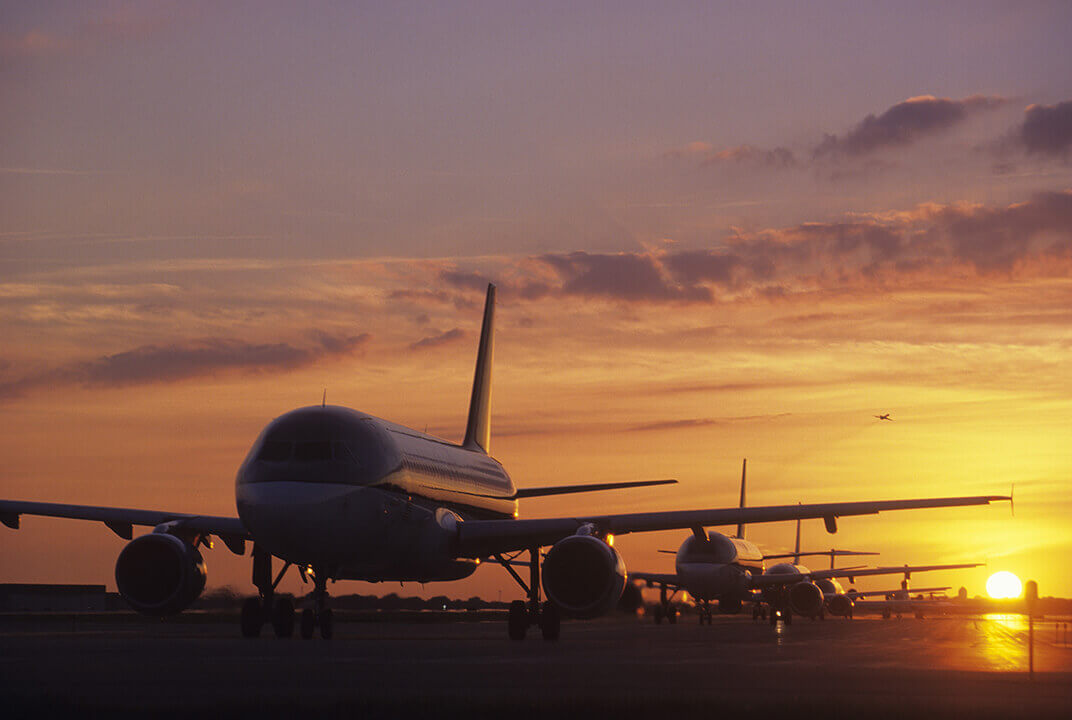Insight | Europe’s short-haul operators can grow revenue and cut costs with EAN
Europe’s short-haul operators can grow revenue and cut costs with EAN
Aviation
Why the European Aviation Network will give participating airlines a crucial commercial advantage
The launch of the most sophisticated inflight broadband solution in Europe – the European Aviation Network (EAN) – drives the pressing need for airlines to act now. EAN’s comprehensive offering allows carriers to make money via broadband-enabled revenue, as well as save money thanks to a range of operational efficiencies. Passenger experience, brand reputation and customer loyalty will all pivot on this connectivity revolution. And airlines not on board will miss out.
Unprecedented change is happening in the skies above Europe
EAN is an innovative solution to the continent’s distinctive aviation demands – namely dense, congested airspace, a high number of key aircraft hubs close to each other and ever-rising passenger numbers.
But the award-winning EAN also offers more. The fastest inflight broadband service in Europe provides short-haul carriers with the unique opportunity to not only make money, but save money too.
Short-haul: The opportunities
Inflight connectivity (IFC) serves as a significant point of difference for airlines. As data-hungry passengers become more discerning in what ‘Wi-Fi in the sky’ service they want, seamless, high-speed broadband can enhance an airline’s reputation and passenger loyalty.
This becomes even more acute in short-haul. These passengers expect a service that just works. In this sense, their journeys are much like that of train commuters. They want to carry on what they were working on/watching before they got on the plane. Any interruption is a major inconvenience. Brand damage is at risk if no solution is offered or if it’s an inferior service characterised by drop-outs and interruptions.
This window of opportunity is finite, however. Customers might be swayed by IFC right now, but in the future – when inflight broadband is seen as standard – this singular chance to boost reputation and steal a march on the competition will have passed.
Speaking at the launch of the London School of Economics’ first Sky High Economics survey – in association with Inmarsat – the report’s author, Dr Alexander Grous, made it clear that a reliable broadband connection was key for airlines.
“It will be the catalyst for rolling out more creative advertising, content and e-commerce packages,” he said. “We will see innovative deals struck, partnerships formed and business models fundamentally changed.”
EAN’s market-leading capabilities guarantee IFC’s enabling role. It delivers up to 75Mbps bandwidth to the aircraft. And with the lowest latency in the sector – up to 10 times lower than satcom-only IFC systems – and a dedicated 90 Gbps total capacity to the aviation industry, passengers experience Wi-Fi comparable to that they use on the ground.
This high-speed, consistent service is a pre-requisite for generating a variety of ancillary revenue streams. Enabling paid service access, advertising, real-time gaming, e-commerce and premium content such as streaming and live TV can help unlock the $8.2bn ancillary opportunity in Europe.
For those wanting to work on the plane – via video conferencing or sharing a document, for example – or use cloud services such as Dropbox or Google Drive, EAN’s massive bandwidth has got passengers’ needs covered.
Digital natives: A new generation demand a new connectivity solution
The third and final chapter of LSE’s ground-breaking Sky High Economics report has unveiled more ways that EAN can help airlines respond to European aviation’s exceptional challenges.
Chief among them is the report’s finding that a $33bn annual market is waiting to be won by airlines that offer the connected inflight experiences that a new breed of passenger – Generation Z – demand.
These passengers – up to 450m of them currently, according to Dr Grous – don’t care about traditional airline loyalty. They aren’t wedded to one airline and will take their business to the airline that offers them the ‘always on’ lifestyle they expect.
Sky High Economics 3 also reveals that 7 in 10 Generation Z flyers would prefer to book holiday services while in the air – provided robust, reliable and high-speed inflight broadband was available.
With this in mind, Inmarsat recently challenged aviation analyst Alex Macheras to put EAN through its paces. On a Vueling flight to Barcelona, Macheras was invited to not only upgrade his hotel while in the air, but book activities in the city and a restaurant reservation too.
“It couldn’t have been easier,” he reveals. “The Wi-Fi was easy to log into and purchase, then EAN’s speed was impressive, with no interruptions and no drop-outs, just as promised.
Macheras enthusiastically adds: “This kind of onboard Wi-Fi is so appealing to the generations that I fit into, kind of between the young Millennial and the Gen Z. Both have this expectation that everything should happen now, everything should be instant, everything is much more interesting provided that it is now, not something that was seen yesterday. When travelling, IFC facilitates that.”
Macheras concludes: “I think airlines will soon wake up to the reality that passengers can continue with their everyday life on the aircraft. We have to get rid of this stigma that once that aircraft door closes, you suspend your life for two and half hours and then pick it up afterwards. Things can continue and the way I used EAN during this challenge is evidence of that.”
EAN’s integrated European IFC system can seamlessly deliver this. In short, EAN is the answer to those short-haul operators that want to stake their claim of a $33bn market.
Saving money: The potential rewards
European airspace will only get busier. At present, there are one billion annual passengers. In just 15 years’, this will have swollen by half again to 1.5bn.
Rising passenger numbers will unsurprisingly have a knock-on effect on capacity and passenger expectations for connectivity. EAN has the fastest scalability on the market. This means that capacity can be delivered when required. It can also be increased in months, rather than years, by adding new terminals to existing towers and extending the network. New markets can be brought online instantly due to ubiquitous European coverage via a state of the art S-band satellite.
Crucially, connectivity not only makes money for airlines, it brings with it a suite of operational efficiencies and cost savings. And these savings begin immediately. With an installation time of just nine hours, aircraft spend 80% less time on the ground than with satcom-only solutions.
In addition, EAN offers the lowest total cost of operations in Europe, meaning airlines can reach break-even and profit status faster. LSE’s second Sky High Economics report all pointed to these potential rewards for short-haul operators utilising the opportunities that EAN creates.
With the skies getting busier, the prospect of unscheduled issues such as delays, diversions and unscheduled maintenance could become a real headache for airlines. Carriers know they need to get smarter and, thanks to IFC, they can see the potential for real gains in operational efficiencies, such as route optimisation, predictive maintenance and always-on crew applications.
When you consider unscheduled maintenance accounts for almost half of an airline’s delays, this will be welcomed by carriers everywhere.
An IP-enabled aircraft has efficiency front and centre. Better weather intelligence can help save 1% of global fuel burn – equal to 3.39bn litres of fuel every year.
Enhanced telemedicine technology enabled by inflight connectivity can also provide substantial savings. Reducing diversions by just 10% could see a cumulative decrease of US$1.4bn by 2035.
In addition, EAN’s cheaper, lighter and lower drag equipment also results in three times less fuel impact than other systems offered in Europe.
The time to act is now
For those airlines that have yet to commit to an inflight broadband solution, this window of opportunity will quickly shut. The time to act is now. The sophisticated, reliable and future-proofed EAN will ensure that passenger experience is transformed.
In turn, this will act as a differentiator for airlines, enhancing reputation and engendering loyalty.
Passengers know what they want. Now it’s time for airlines to deliver.


